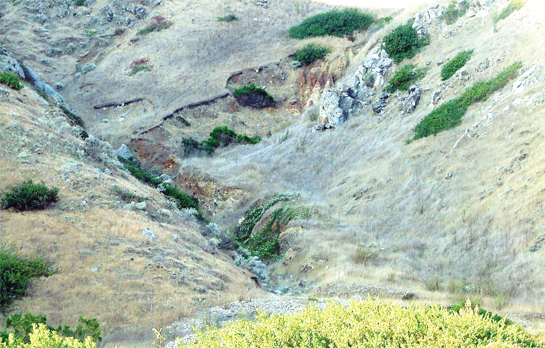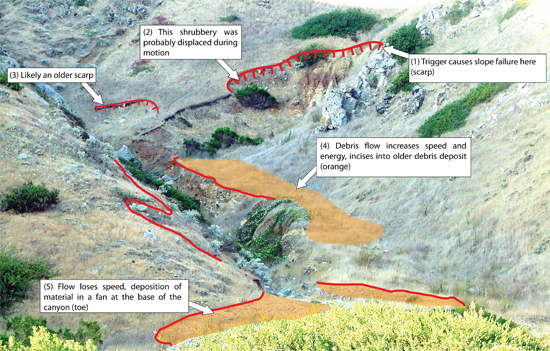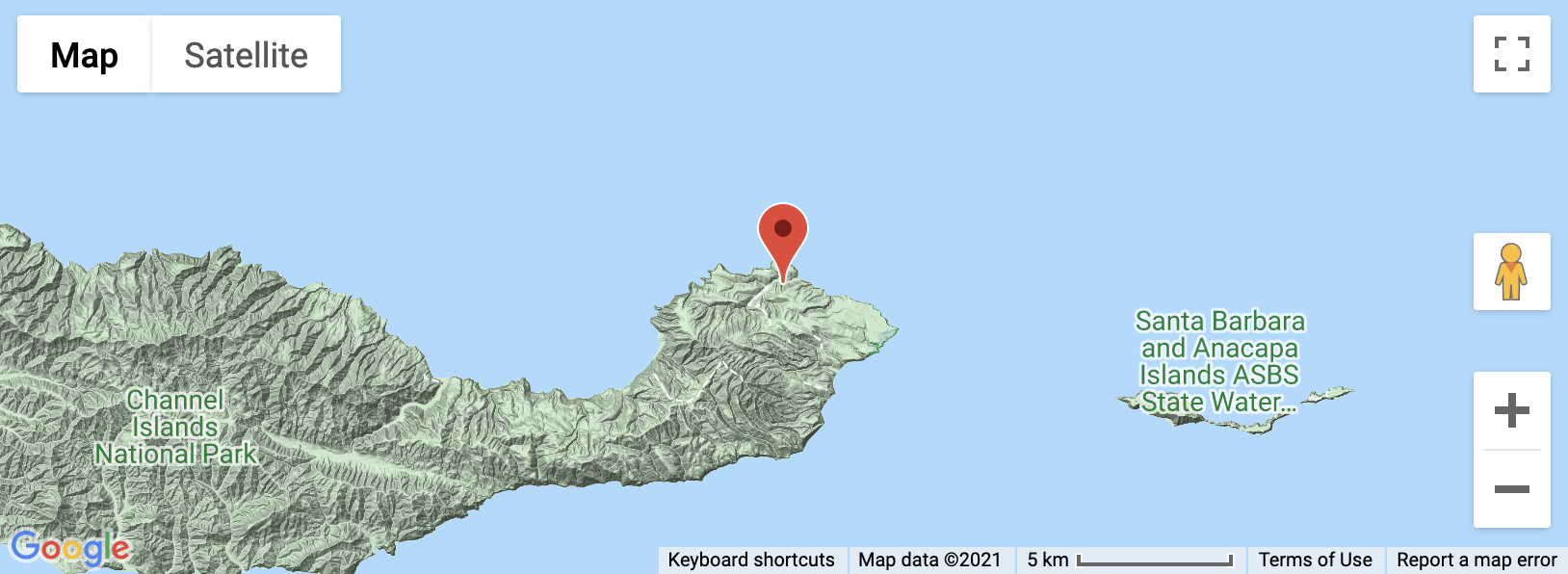Whilst carrying your belongings, food, and tasty adult beverages from Scorpion Anchorage to the Scorpion Canyon campground, don't forget to take some time and have a look around. You just might see this on the south side of the canyon:

Okay, so you're thinking "Wow, another small drainage, ya-hoo", with about as much enthusiasm as a 5 year-old getting a flu shot.
HANG ON A MINUTE!! This little drainage has a really cool story, if you know what to look for.
Santa Cruz Island has a plethora of steep slopes mantled with soils (check out Bridget and Aaron's paper in this collection for more detail, I'm not a soil scientist and don't play one on TV), and if you have just the right mix of soil, gravity, lack of vegetation, and a fair bit of precipitation, interesting things can happen. Vegetation helps stabilize slopes; too much water can de-stabilize a slope. As you might guess, a de-vegetated slope (quite possibly by over-grazing) plus intense rainfall can equal slope failure. Sometimes these slope failures can be quite spectacular, but in the case here (small debris flows)- just large enough to enjoy. Here's what a geomorphologist would be seeing in this canyon. Don't worry, I'll walk you through it shortly.

- Some sort of triggering mechanism (excess rain, earthquake, etc...) causes a steeper section of the canyon wall to fail, and start sliding downhill. This produces a scarp at the top of the slide/ flow.
- This plant probably used to be higher up on the slope. These things don't grow on excessively over-steepened topography.
- This is a pretty apparent scarp, but is grown over with grasses... so it's probably a bit older.
- Classic tenet of geomorphology: Speed + mass = lots of work available for incision. This drainage is fairly small, so most of the incision is probably done by debris flows as opposed to fluvial processes. In this channel it's pretty clear that this small flow incised into an older deposit (highlighted in orange).
- Of course, at the base of the drainage, the slope decreases dramatically. Decreased slope produces a drop in the speed and energy of the debris flow- and it is no longer cutting into the topography, but depositing material building local topographic relief. All the loose material in this fan at the mouth of the drainage is the toe of the debris flow.

